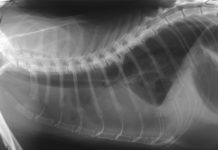Did you know that the bone overgrowth in cats is as possible as it is in humans? Even though it is a rare feline condition, it may still create an extreme discomfort, as well as pain to cats. It actually refers to the abnormal increase in the size of the bone, because of the new formation of the bone. This may cause some swellings at all the four limbs and is often being confused with arthritis. The overgrowth in the bones may also cause lameness to the cats due to pain and swelling at bones and joints. Read on to this article and get to learn more about this feline condition.
Bone Overgrowth in Cats: What is this feline condition?

The bone overgrowth in cats may happen when the development of the new bones suddenly causes an abnormal growth of the bones. Further, it is not that known to be a life-threatening illness, yet it still may cause discomfort, severe pain, and swelling in the cat. Additionally, this particular condition may be reduced when you visit the vet for prognosis and treatment.
Moreover, hypertrophic osteopathy or bone overgrowth is a feline condition, wherein the bones are abnormally growing in the pet. This particular condition is not really often found in cats –in fact, it is very rare of a cat condition. However, the cats are still at risk of suffering from it.
Causes of Cat Bone Overgrowth
The bone overgrowth in cats is commonly due to a causal disease or cause. This may range from a tumor to a heartworm disease. Below are some of the known possible causes of bone overgrowth in cats:
- Tumor on the liver, prostate gland, or urinary bladder
- Metastatic or primary lung tumor
- Abscess in the lungs
- Mycobacterial or lobar pneumonia
- Disease of the abdominal or chest area
- Heart illness
- Heartworm disease
- Pneumonia
Symptoms of Cat Bone Overgrowth
In case your cat is suffering from an overgrowth on its bone, you might notice some or all of the following symptoms of bone overgrowth in cats:
- Evidence of body cavity tumor
- Pain in the long bones
- Inability to use the limbs
- Lack of strength
- Painful limbs
- Swelling
- Unwillingness to move
- Tiredness
- Lethargy
Prognosis of Cat Bone Overgrowth
The signs and symptoms of the condition are often being confused with some other conditions, just like arthritis. Paying your vet a visit is important in making a precise diagnosis.
You may expect your vet to give the cat a thorough physical examination, in order to check the symptoms, as well as rule out some other conditions. The vet may also ask some question regarding the symptoms, medical history, as well as the behavior of the cat. You should bear in mind that you need to let your vet know that your cat has already suffered from past illnesses before, just like pneumonia or heartworm disease. These past conditions may play a significant role in the current situation of having bone overgrowth.

Moreover, the cat may also need to undergo some routine examinations, just like a complete blood count, biochemistry, and urinalysis. The exam results might come back as normal –that is why the vet may need to find any causal disease of the bone overgrowth. X-rays and ultrasounds are also done, in order to check for tumors, bone reactions, and new bone formations. Additionally, the vet may also check for further tumors, as well as recommend a biopsy, in order to see if the tumors are benign or hazardous.
The vet may use the signs and symptoms, as well as the test results to prognosis the underlying cause, as well as the bone overgrowth. It is so important that you take your cat to the vet as soon as you get to notice the symptoms of the bone overgrowth.
Treatments for Cat Bone Overgrowth
Unless the underlying cause is already identified, it is not always probable to treat the bone overgrowth. In case an underlying cause is already identified, treating it may help in relieving the pain, as well as discomfort in the cat.
Surgical procedure of tumors
Surgical operation is just used as a form of treatment in case an operable tumor is found in the cat. The vet may remove the tumor and cut the nerve around the area. This is mainly done for the reduction of pain, as well as to stop the abnormal growth of the bone. The fact of having a tumor removed surgically might be a bit stressful, yet the risk of the complications is commonly low for the cats.
Medication to relieve conditions
Using a medication is a common treatment for bone overgrowth in cats. the vet may prescribe antibiotics, in order to bring down the swelling and pain, as well as to bring comfort to the cat. It is very important to follow the proper guidelines, as well as administer the medication at the proper dosage and time. This is for the maintenance of the quality of life of the cat.









